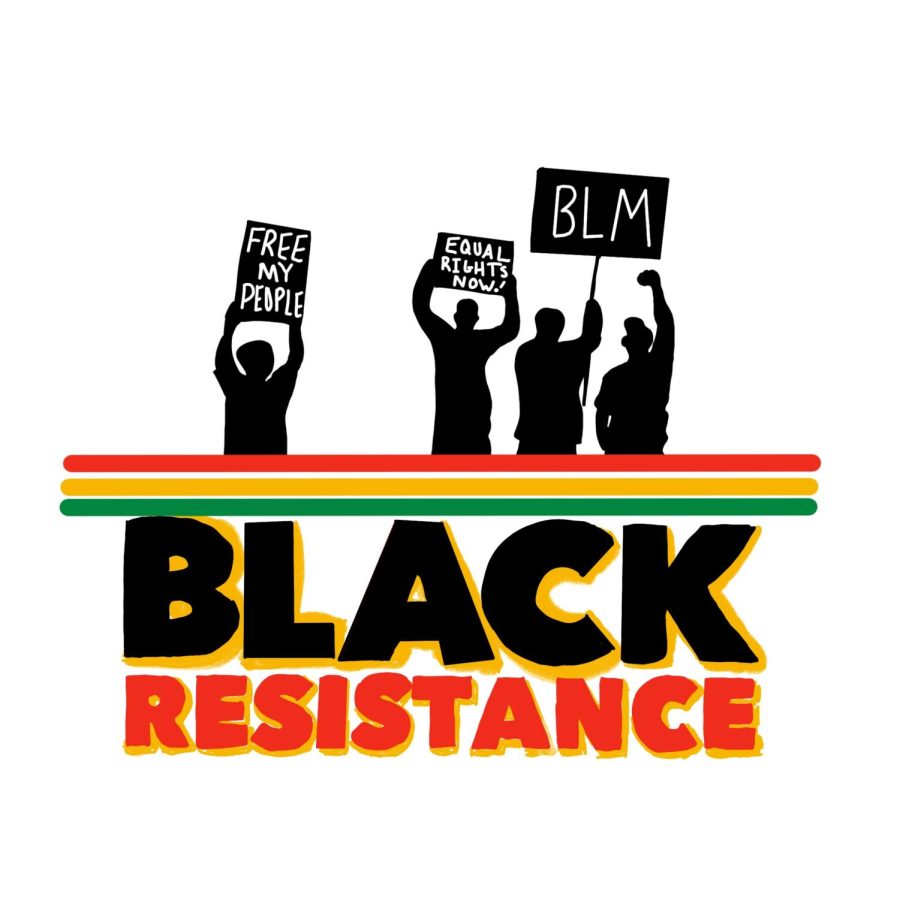Resistance through the ages
“Black Resistance” told through lesser-known individuals
Martin Luther King Jr., Rosa Parks, Frederick Douglass and Harriet Tubman are all names that most Americans are well aware of. During the month of February, teachers have time and time again reviewed their captivating stories. But so often the American education system fails to understand the truth regarding Black History, since so many individuals who were crucial to history are overlooked.
Racial oppression has rattled America for its entire existence; even in the modern world, it continues to endure. Black History Month celebrates African Americans and all they have contributed to United States history. Every year since 1976, it has been the president’s job to designate a theme to the month. This year, the theme “Black Resistance” has been chosen. This theme specifically celebrates Black Americans and their refusal to allow oppression to continue. The theme applies to every moment of Black History, including the current day. To celebrate Black History Month this year, it is crucial to recognize individuals who have demonstrated resistance and individuals who may be less televised.
Underground Railroad and Civil War
The underground railroad plays a vital role in “Black Resistance,” as it demonstrates how Black Americans refused to allow slavery to continue in states that were not yet free. Mary Ann Shadd Cary may not be a household name, but she was a significant figure regarding both the Underground Railroad and the Civil War. Shadd grew up in a family who helped freedom seekers escape slavery through the Underground Railroad. The Fugitive Slave Act would be passed in 1850, which was a law that allowed those who helped slaves escape captivity to be punished. With her life now at risk, Shadd moved to Ontario, Canada in hopes to obtain safety.
While in Canada, Shadd opened a school for black and white students, published Canada’s first antislavery newspaper and became the first black, female newspaper editor. When the Civil War erupted, Shadd made it her mission to recruit soldiers for the Union Army. On top of all of this, Shadd went to law school, was a member of the National Woman Suffrage Association and was an advocate for the Fourteenth and Fifteenth Amendments. Shadd’s accomplishments don’t end there, diving more deeply into her story and many others this month will be extremely beneficial.
The Civil Rights Movement and Montgomery Bus Boycotts
Jo Ann Robinson was a key figure in the bus boycotts. After she experienced firsthand verbal abuse from a man and fled a bus out of fear of being hit, she knew she had to step up in the Montgomery Bus Boycott following the arrest of Rosa Parks. Robinson started her mission by distributing 50,000 flyers in order to promote the boycott. She was later named Women’s Political Council president and advocated for women as well.
Her role in the boycott would lead to harassment and later an arrest. Towards the end of her life, Robinson published a memoir “The Montgomery Bus Boycott and the Woman Who Started It,” which showcases how women played vital roles in the civil rights movement and gives insight into Robinson’s life. This would be a great read in order to dive deeper into understanding the bus boycotts.
Black Lives Matter Movement
One hashtag single-handedly changed the course of action for multiple African Americans was a simple statement of “#BlackLivesMatter.” Started by three women by the names of Alicia Garza, Opal Tometi and Patrisse Cullors, the movement seeks to highlight social injustice, racism, discrimination and racial inequalities that many Black people face on a day-to-day basis. Mainly looking in on police brutality that many combat, the movement started after the killings of Trayvon Martin, Michael Brown, Eric Garner, Pamela Turner and Rekia Boyd, among many others.
Garza birthed this by one post on Facebook that stated, “I continue to be surprised at how little Black lives matter… Our lives matter.” While her colleagues responded back with “#BlackLivesMatter,” the three of them curated one of the biggest racial injustice groups since the Black Panthers.
“Black resistance” runs thick throughout the Black Lives Matter (BLM) movement, the entire point is to call out the unfair treatment they receive, not only on a systemic level, but simple, everyday moments.
History courses often review the same individuals, and although this is often for the sake of time or curriculum, learning about those who are lesser known can help us better uncover history. These are just three of the many influential individuals that have made a mark on America behind the scenes. During Black History Month, it is crucial to learn new historical figures rather than just reviewing the same people.













